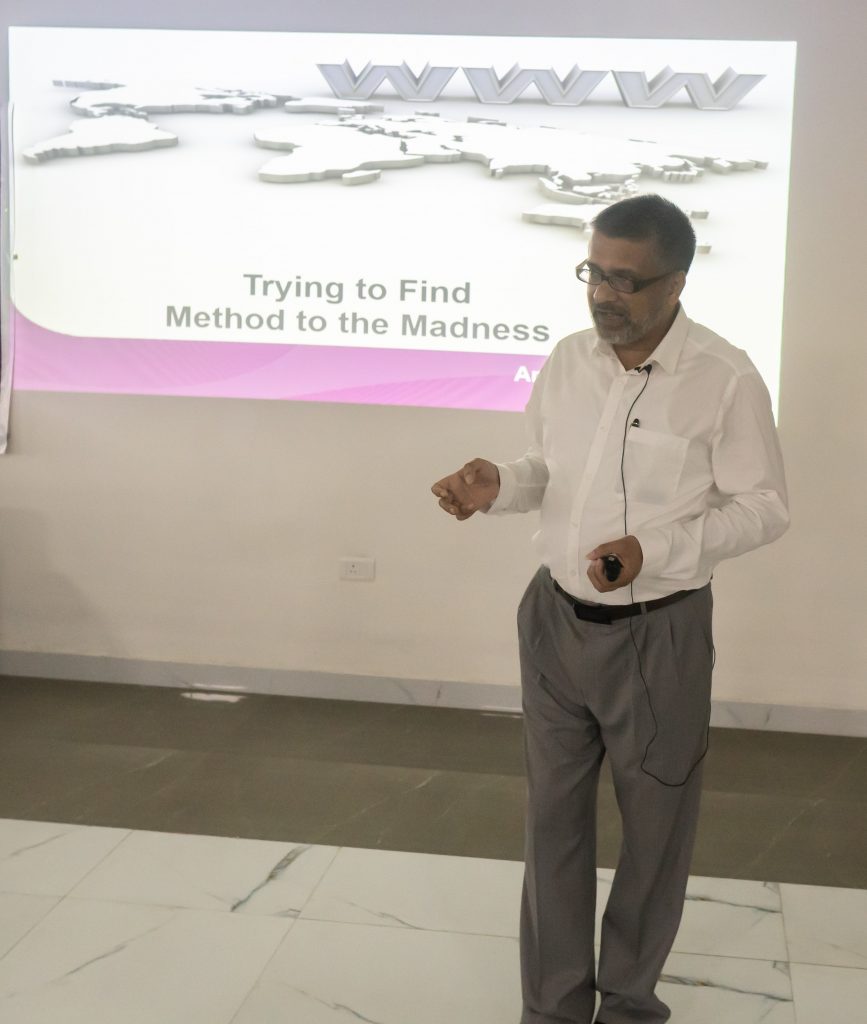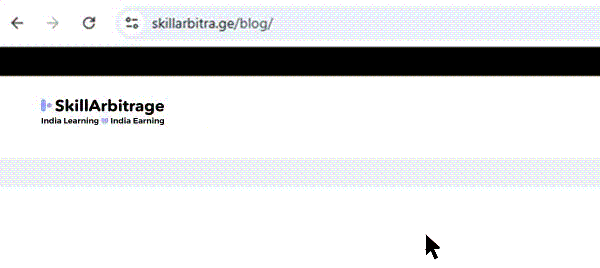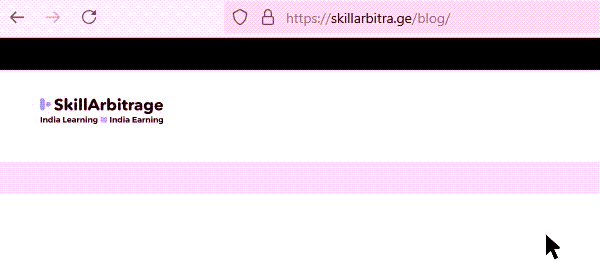
Q1. A B. Tech degree from the prestigious IIT, and 25 years in IT companies like Microsoft, Infosys, Wipro etc. What made you move from IT enabled service to brand building and communication?
In today’s world, we are very prompt in stereotyping. With the institute and the organisations I have worked in, most tag me as an IT expert. However, my IIT degree and the experience I have gathered from companies I have worked in have been a bit different from the popular impression that we have.
I never aspired to be an engineer in the first place. Always wanted to pursue core science or human psychology for my higher education. But during our days the culture was different. If you got through the IIT JEE, it was difficult to muster courage and proclaim that you would not join. At least I did not have as much confidence to talk it out with my parents.
But in hindsight, I was fortunate that Industrial Engineering gave me exposure beyond technology. I had learnt broad management principles which helped me understand the outcome of projects better. It facilitated my transition from IT to functional and strategic consulting. The last few IT organisations where I worked also have a consulting wing, of which I was a part.
The last decade had been consulting-focused, a lot of which was on brand building and communication. I thoroughly enjoyed the roles. When it came to starting Confiance, there was no second thought on what I wanted to do.
Q2. As a founder of Confiance Mobility LLP how does your job experience help in brand building and communication?
My exposure to functional and strategic consulting has a lot to do with the success we have had in Confiance. It helps me understand the business perspectives of the executives. That is why our proposals are always outcome-based. This gives a lot of confidence to the CXOs, over just creative ideas of brand building, which cannot predict its outcome at the planning stage.
Every campaign that we propose has primary and secondary outcome definitions. Any mature business leader will understand that it is difficult to guarantee any outcome before execution. That is where the secondary definitions provide them with confidence.
Q3. Exactly what do you mean by tech-enabled communication? How is it unique?
Let me try to do this by taking the scenario of the development of a simple website for a business.
Even in this world, when everything is geared to be delivered through digital channels, traditional creative agencies still do not have the bandwidth to recommend brand management strategies for enterprises which directly relate to business outcomes. They are not in a position to consult on the complexity of usability and content required for the website of the business. For e.g. the questions like should we do for SaaS based website builders or have a dedicated one developed directly from scratch. We need to keep in mind that the business can’t blindly opt for the best solution. The cost-benefit analysis is required. Everything comes at a cost.
The IT industry is no less deficient. Just because they know the tools, they feel that the art of communication can be ignored. The normal practice of template operation is to sign off on a communication tool like the website with dummy content, asking the customer to replace LoremIpsum with the actual text. Or else they employ ‘content writers’ or use AI-generated content, checked for grammar by some other tool. In the end, they just try to browbeat with jargon.
So an advertising agency would create a beautiful website but with its usability totally outweighed by grand aesthetics, while the IT development house will have a technologically well-developed website. But the fact remains that none of the partners would deliver what is required for the business to succeed.
Now make the two shake hands and you have tech-enabled communication!
Q4. You’ve also founded both Turi Films and Chota Story, platforms that promote aspiring filmmakers and storytellers. What inspired you to create these initiatives, and how do they align with your broader vision?
We are going through a phase of overindulgence in content marketing. With everyone putting up similar content on the web, packaged in different wrappers. Add to that the diminishing attention span of today’s users. How much time can you get? How do you stand apart?
I am a strong proponent of disruptive communication. Turi Film and Chota Story have that vision at their core.
While www.chotastory.com is a portal where amateur writers can submit micro-stories within 100 words. The platform promotes the storytellers and gets them visibility in front of a much bigger audience. We are also publishing an annual digest of the stories published on the platform.
www.youtube.com/@TuriFilm is a recently launched production house. We just had a successful film festival on micro-films (films under 5 minutes).
Through these platforms, we are trying to bring out aspiring storytellers and filmmakers and put them in front of a larger audience where they can showcase their talent. We will also connect them with corporates for contracts around their communication needs. There are many disruptive ideas we have in mind. While we cannot discuss it here, you will definitely know as and when they get released.
Q5. Confiance Mobility LLP emphasizes a balance between modern digital solutions and traditional media. Can you provide an example of a successful campaign where this balance played a crucial role in achieving your branding goals?
Let me mention two anecdotes here:
In the first one, The IT head of a leading company enquired why we use 3rd party tools and not develop on our own. We do not recreate history. We are humble. We believe in acknowledging and utilizing the best resources and custom packaging them to meet the business priorities of the customer.
On the same note, while digital solutions are the buzzword nowadays, there are still areas where traditional media scores much better and will continue to do so. In fact, in traditional media still enjoys more trust over digital. Terms like WhatsApp University etc are not helping the digital world. But as the market matures, convergence will be the key to communication.
Coming to the second one, I was a part of the communication and marketing team of a leading BFSI company. In our strategy meetings the creative agency, led by a national award winner director, often argued that finance is serious business. Social media is not the best place for financial companies. We all know how it went!
We believe that the key is to put the message across, not fight over the media we choose.
Q6. As a mentor to startup businesses and corporates, what advice do you typically offer when it comes to making decisions and implementing them effectively?
This is a very difficult question. Mentoring startups is a tricky business. One size does not fit all. But if I have to pick up one aspect it would be the passion of the entrepreneur. It is a two-edged sword.
The founder’s passion is the motivator for the team, investors, and the customers. It is the passion that helps all the stakeholders and the entire team to stay unhindered during tough times and boost the confidence of the customers through the right communication.
But sometimes the passion might get uncontrollable and push the decision-makers into adopting a counterproductive business strategy.
My primary job as a mentor is to help them strike the right balance.
Just like in Confiance, along with guiding customers into defining what to say, when to say, and how to say it, we also give equal (or more) importance to what not to say, as a startup mentor I try to help guide the founders on the business strategy to take and the low hanging fruits to avoid, if they carry the risk of being harmful in the long run.
Q7. Your involvement in social initiatives such as child rights and animal rights is admirable. How do you see the intersection of technology, communication, and social responsibility playing a role in creating a better society?
If you think about it, you will find that in our society children and animals are treated just the same. We dictate their lives, train them so that they are not a major inconvenience to us, and hardly have time to understand their needs.
This perturbs me to the core. In fact, that was the primary driver for me to get my Diploma in Child Psychology and a Certificate in Canine Communication.
If I have to take up a cause on child rights, I would say that there is one which is hardly spoken about in our society. Parental Alienation.
In recent times of rampant marital disputes, Parental Alienation is becoming an epidemic in our country, where not many even understand or recognize the issue.
Parents are the basis of a child’s foundation. If the foundation itself gets unsettled due to death or parental separation, it can have a significant impact on the delicate psyche of a child. Death can’t be avoided but in case of parental separation, unless there is proven child abuse or neglect, a child should not be included in the dispute of the adults.
A bad spouse does not necessarily mean a bad parent, but the custodial parents think that just because they have been shortchanged in their marriage, the child is the pawn through whom they should take revenge.
My involvement is to build content and use communication channels to create awareness of such issues.
I do nothing extraordinary to call for admiration of any sort. It is the duty of any socially responsible citizen. Yes, it is a pity that not everyone performs them, but let’s motivate them so they do.
Q8. With your extensive experience, both as an entrepreneur and in leadership roles, what key trends do you foresee in the field of branding and marketing?
The digital platforms will be more extensively used for communication and marketing. While data will help us better understand our customers, suspects and prospects, we need to keep in mind that Content is still the Queen!
I do not think that the barrage of content marketing, using mediocre AI tools that lack creativity will last for long. AI will mature with tools that help creative mavericks with ideas, planning and delivery, but ultimately it will be the involvement of humans who will distinguish between quality and quantity.
Lastly, as I mentioned earlier, the line between traditional and digital media will blur over time and convergence will be key to the success of any communication initiative.




 Allow notifications
Allow notifications
